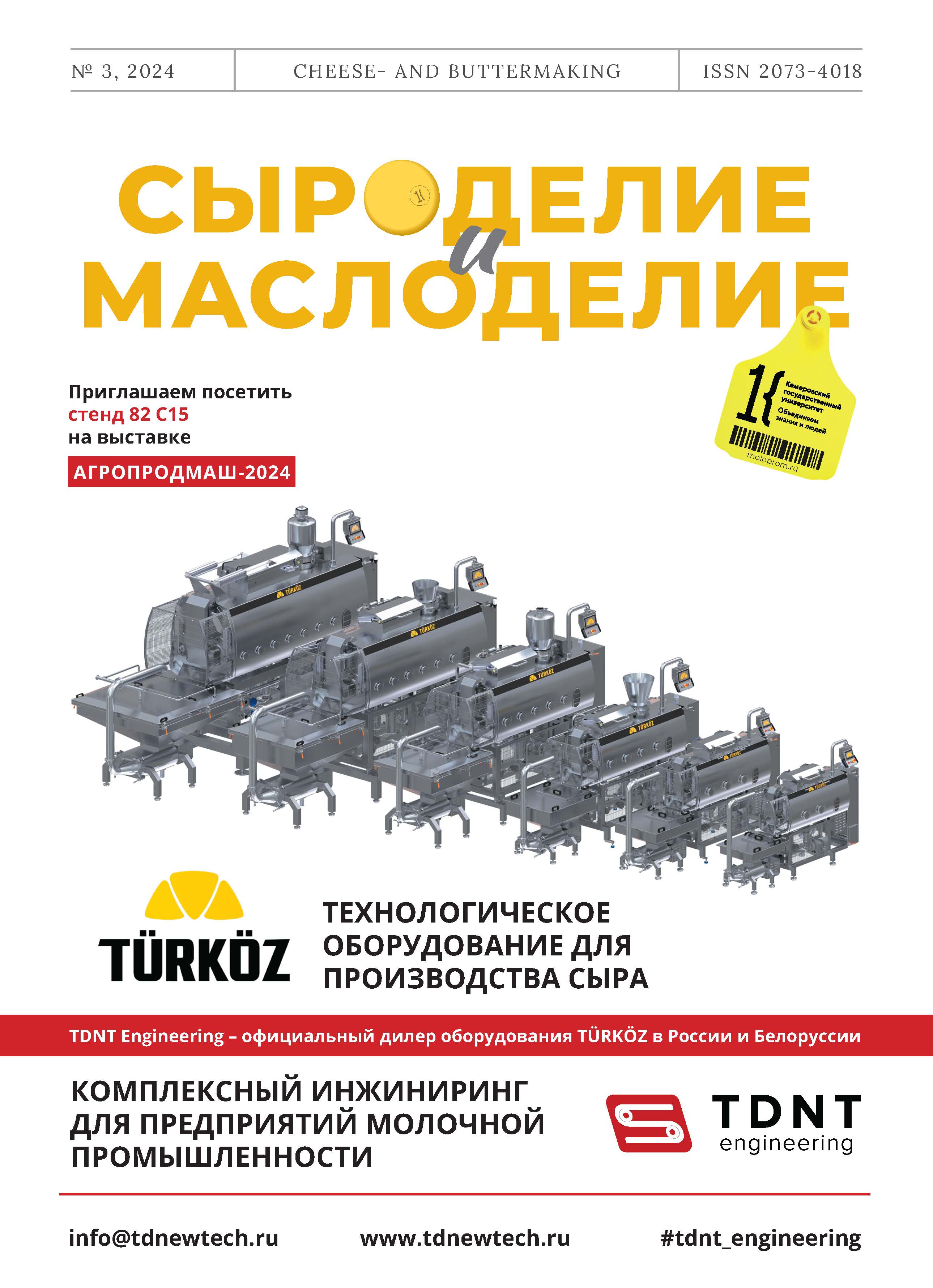Barnaul, Russian Federation
Barnaul, Russian Federation
Moscow, Russian Federation
A deformeter is a deflection device that measures such structural and mechanical properties of cheese as hardness and elasticity. This technology facilitates cheese quality control. The article describes its operation principles and application options in cheese production. A penetrometer is the most common device for assessing the hardness of cheese. However, it cannot measure plasticity. A deformeter, on the other hand, tests both the elastic and plastic properties of cheese. This research featured Reokon 240 deflection device developed at the Siberian Research Institute of Cheese Making. Hardness was expressed as the maximal value of the force applied to the indenter under compression while elasticity was the reduction magnitude on the indenter. The indenter moved at a constant speed, compressing the cheese sample from the original size of 10 mm to that of 6.4 mm. Fixed in this position, the force on the indenter decreased as the stress in the compressed cheese sample relaxed. The test results were compared with those obtained by traditional methods. The experimental hardness data registered with Reokon 240 correlated well with the those obtained by the classical penetration method. The minimal relaxation coefficient belonged to the sample of Parmesan cheese, which had the greatest hardness and was less prone to stress relaxation. The highest relaxation coefficient belonged to the Feta cheese sample, which appeared to be more plastic. These data correlated well with the mass fraction of moisture in the cheese samples. Reokon 240 proved to be an objective instrument of cheese texture assessment. In addition, it could also measure cheese plasticity during pressing. The scope of application could be extended to the rheological properties of fruits and berries.
cheese production, rheology, structural and mechanical properties of cheeses, cheese texture
1. Gudkov, A. V. Syrodelie: tehnologicheskie, biologicheskie i fiziko-himicheskie aspekty / A. V. Gudkov. – M.: De Li print, 2003. – 800 s.
2. Malkin, A. Ya. Reologiya: koncepcii, metody, prilozheniya: avtoriz. per. s angl. yaz. / Malkin A. Ya., Isaev A. I. – SPb.: Professiya, 2010. – 557 s.
3. Musina, O. N. Reologiya / O. N. Musina. – M., Berlin: Direkt-Media, 2015. – 146 s.
4. Kosoy V. D. Reologiya (na primere molochnoy otrasli): monografiya / V. D. Kosoy, N. I. Dunchenko, M. Yu. Merkulov. – M.: Izd-vo RGAU-MSHA im. K. A. Timiryazeva, 2010. – 472 s.
5. Musina, O. N. Processy i oborudovanie v proizvodstve natural'nyh syrov: monografiya / O. N. Musina, A. A. Mayorov. – Barnaul: Izd-vo AltGTU, 2019. – 176 s.
6. Tabachnikov, V. P. Fiziko-himicheskaya interpretaciya i metody issledovaniya processov sychuzhnogo svertyvaniya moloka / V. P. Tabachnikov // Fiziko-himicheskaya mehanika syrodel'nogo proizvodstva: trudy VNIIMS. 1973. № 12. S. 3–10.
7. Mayorov, A. A. Sovremennye pribory kontrolya za processom svertyvaniya moloka / A. A. Mayorov, O. N. Musina // Syrodelie i maslodelie. 2023. № 1. S. 31–33. https://doi.org/10.31515/2073-4018-2023-1-31-33; https://www.elibrary.ru/ssjlul






